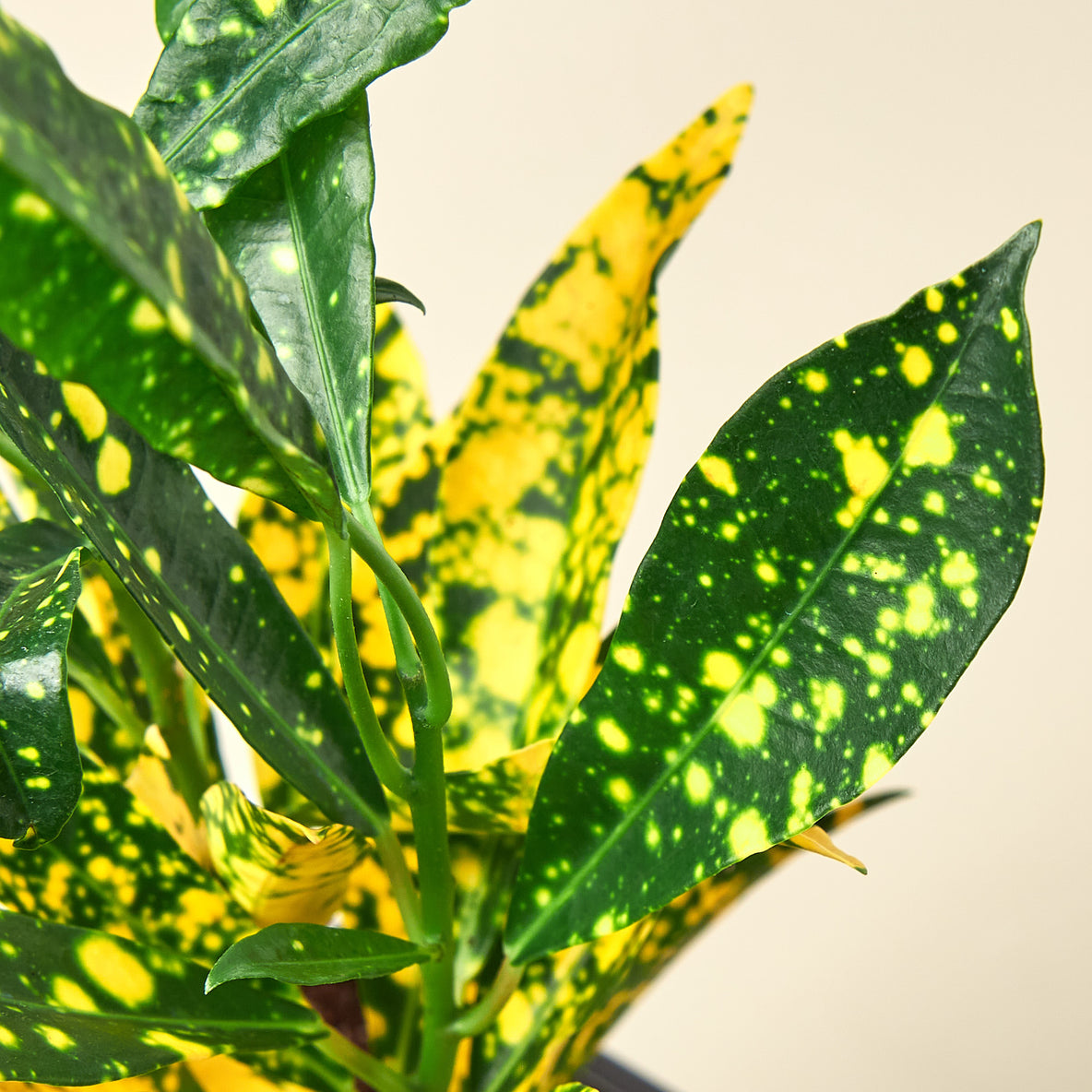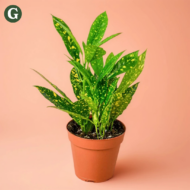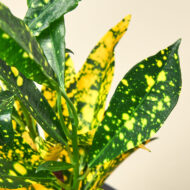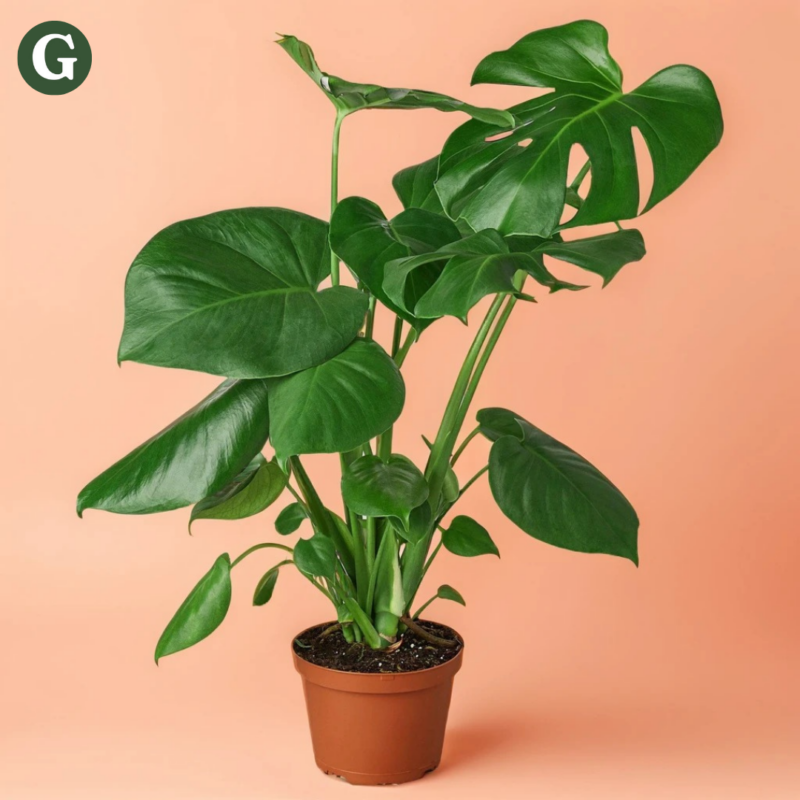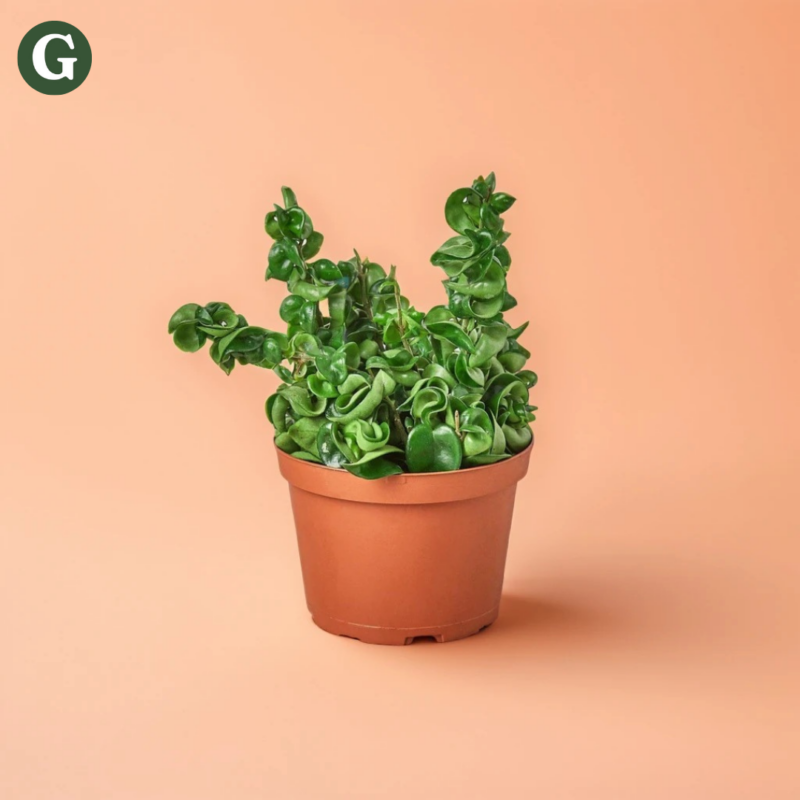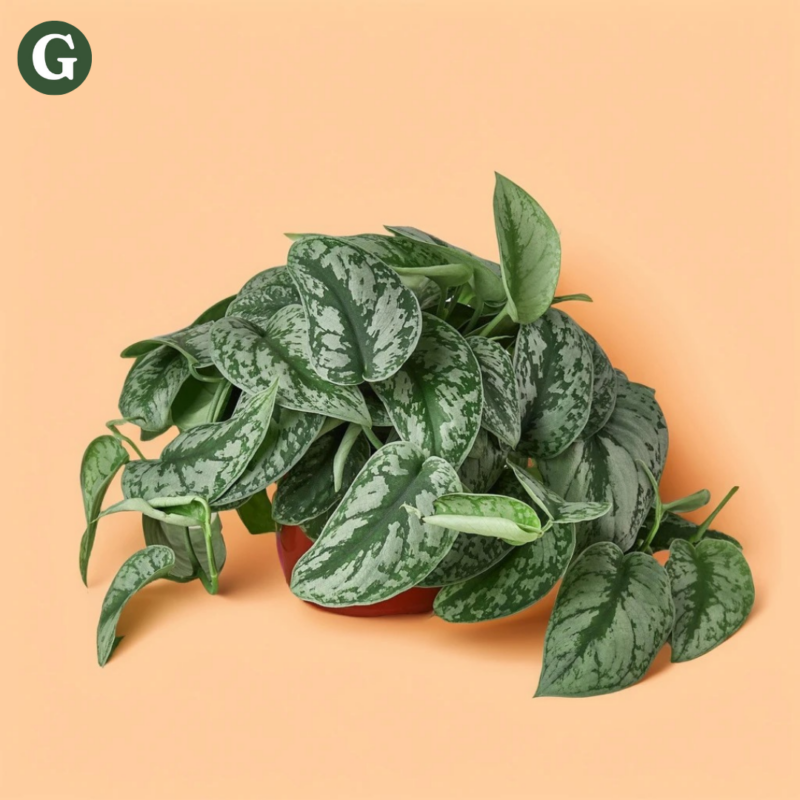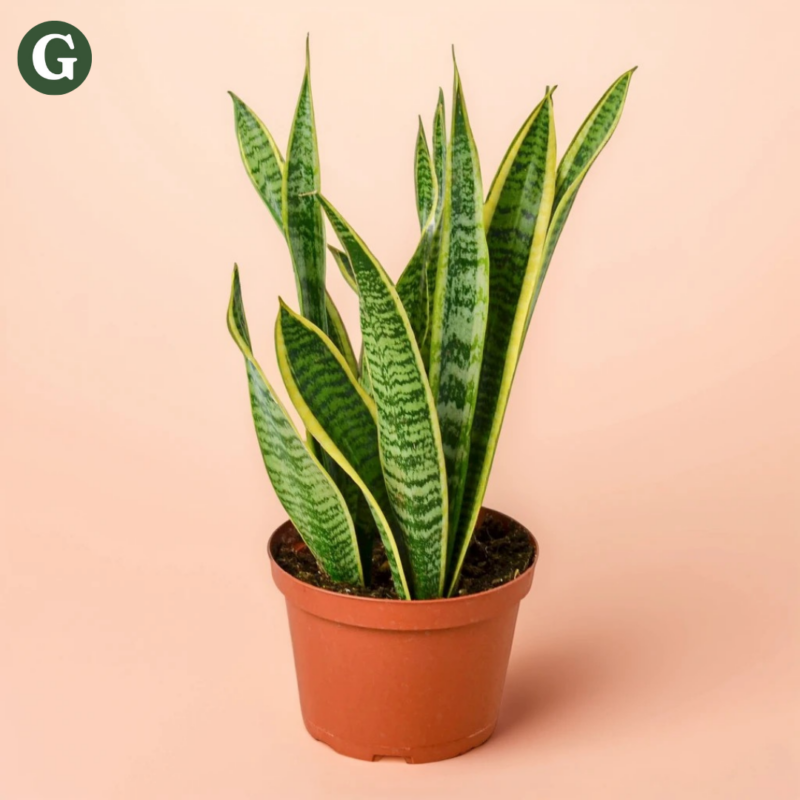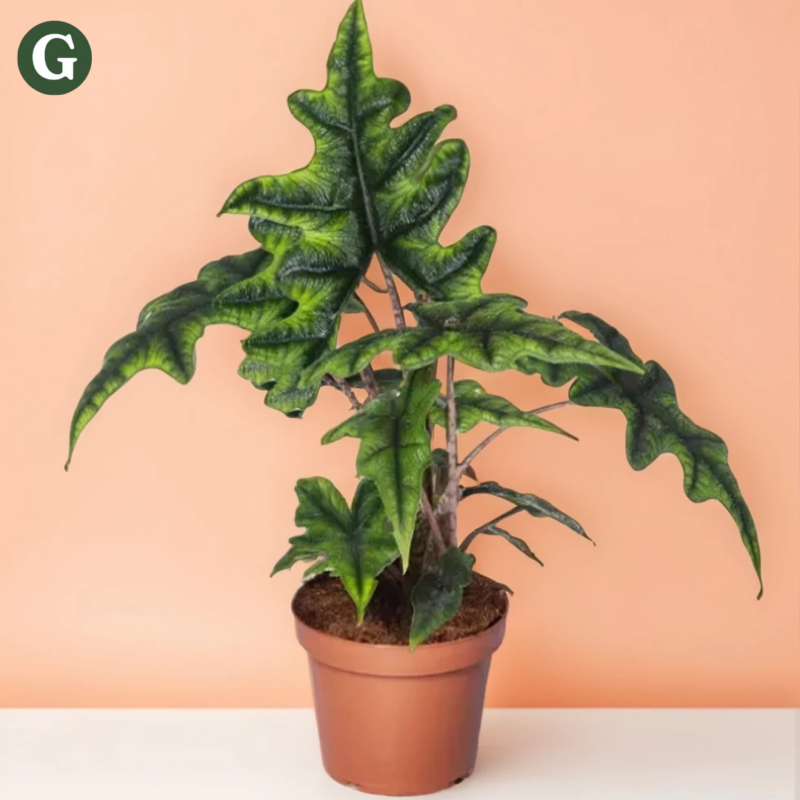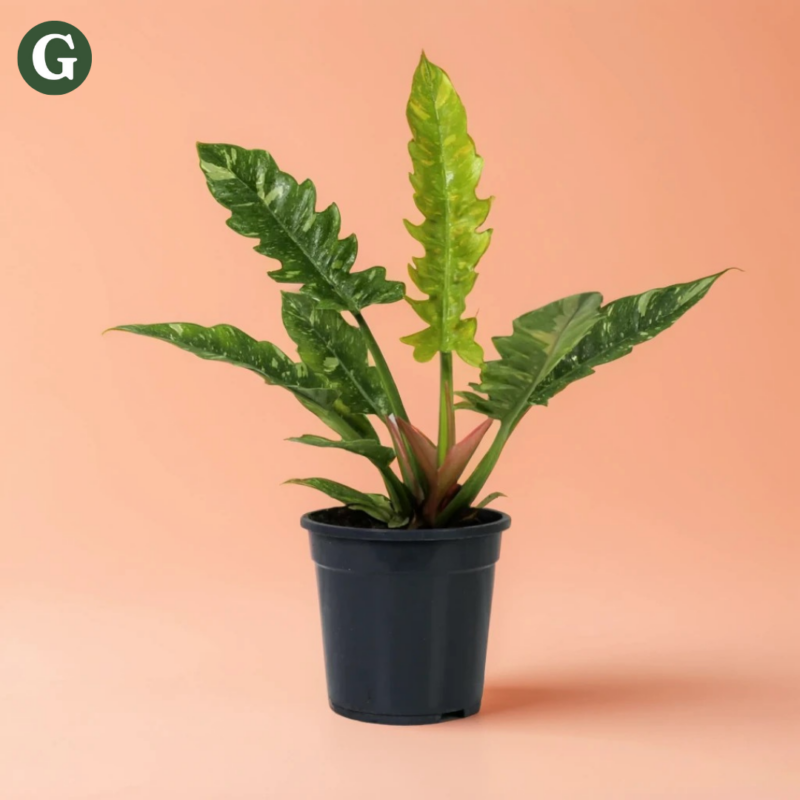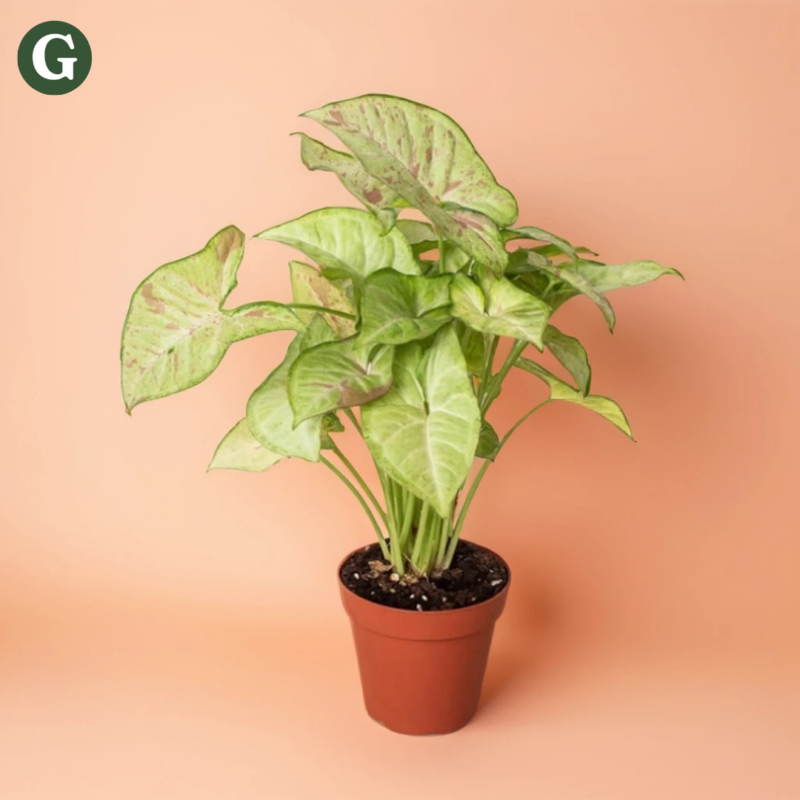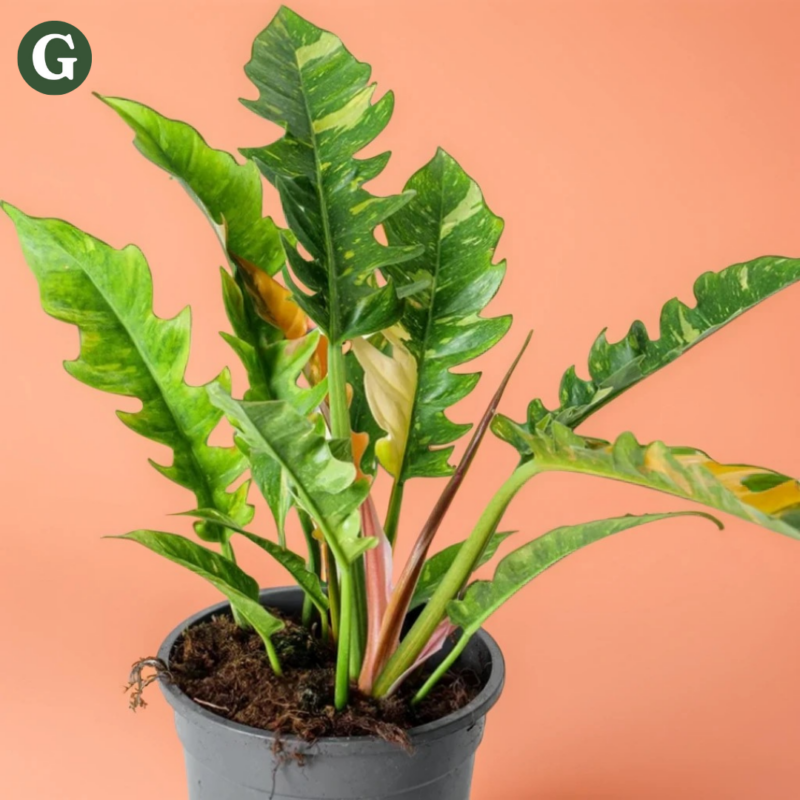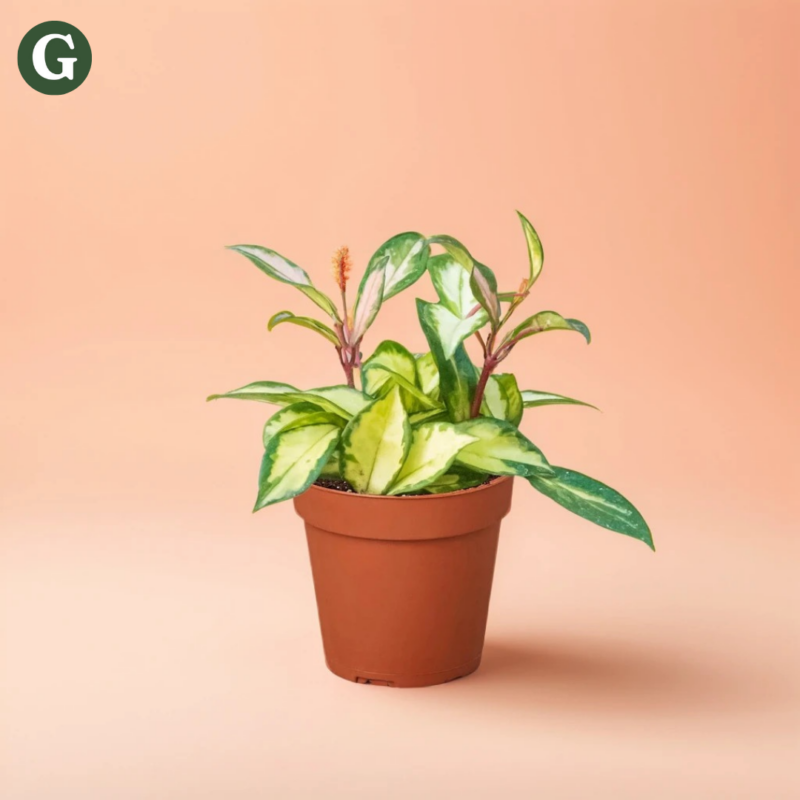Croton Gold Dust
Botanical Name: Codiaeum variegatum 'Gold Dust'
Common Name(s): Gold Dust Croton, Croton 'Gold Dust', Variegated Croton
The Croton Gold Dust is a stunning variety of the Codiaeum variegatum species, known for its vibrant, speckled foliage. Native to the tropical regions of Southeast Asia and the Pacific Islands, Crotons are cherished for their colorful leaves, which often feature a mix of yellow, orange, red, and green hues. This 'Gold Dust' variety is particularly admired for its dark green leaves with bright yellow spots or speckles, giving it a "dusted" appearance, hence the name. This striking coloration makes it a popular choice for adding a touch of drama and color to indoor spaces.
This plant typically grows to a height of about 2-3 feet indoors, with a bushy, upright growth habit. Its leaves are narrow and elongated, with a glossy texture that enhances the contrast of its yellow specks against the dark green backdrop. The plant's vibrant color intensifies when exposed to bright, indirect light, though it can tolerate some direct light. However, if placed in too little light, the colors may fade, and growth may slow.
This Croton prefers a well-draining and slightly acidic potting mix. Watering should be done regularly when the top inch of soil feels dry, but care should be taken not to overwater, as Crotons are prone to root rot in soggy soil. Like most tropical plants, The Croton Gold Dust thrives in a warm, humid environment. It will appreciate temperatures between 60-85°F (15-29°C) and should be protected from cold drafts and temperature fluctuations. To help maintain high humidity levels, misting the leaves or placing the plant on a humidity tray is beneficial.
It is relatively easy to care for this plant but it does require consistent conditions to thrive. If exposed to inconsistent watering, low light, or dry air, the plant may lose leaves or develop brown edges. Regular fertilizing during the growing season (spring and summer) will support its growth and vibrant color.
Note: Croton plants, including the Gold Dust, are toxic to both humans and pets if ingested, causing symptoms like nausea, vomiting, and stomach discomfort. It is important to keep the plant out of reach of children and animals to prevent accidental ingestion.
Care Insights & Expert Tips
- Handle plant with care: Handling the plant may cause mild skin irritation for sensitive individuals, so it's recommended to wear gloves when working with Crotons.
- Benefit from a Humidity Tray: Place the pot on a tray filled with pebbles and water to increase humidity around the plant.
- Repot every 2-3 years: This plant doesn’t need frequent repotting. It can be repotted every 2-3 years, or when the roots become cramped.
- Fertilize during growing season: Fertilize this croton once a month during the spring and summer with a balanced liquid houseplant fertilizer diluted to half strength.

Visit our plant care library
Find essential tips to keep your plants thriving, vibrant, and healthy.

